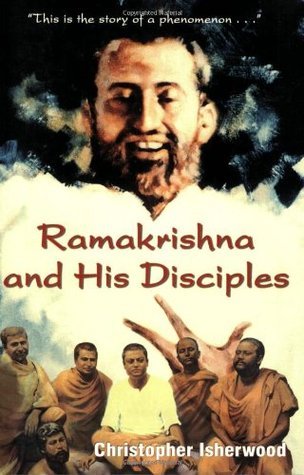What do you think?
Rate this book


340 pages, Paperback
First published January 1, 1965
Isherwood straightaway explains the idea of caste: “To understand Caste as an idea rather than as a system, we have to go back to the Bhagavad-Gita, which dates from about the fifth century B.C. and is still the most widely read work of Hindu religious literature. In the eighteenth chapter of the Gita, we find Caste presented as a kind of natural order. The four castes are described in relation to their duties and responsibilities, without any mention of their privileges” (7).
“Ramakrishna replied calmly that this was the right way to meditate [naked]. Man labours from his birth under eight forms of bondage, he told Hriday: they are hatred, shame, fear, doubt, aversion, self-righteousness, pride in one’s lineate and pride in one’s caste-status. All these forms of bondage tie man’s mind down to worldly thoughts and desires and prevent him from raising his mind to spiritual things. The sacred thread reminds a man that he belongs to the highest caste, that of the brahmins; therefore it makes him proud of his birth. And so it must be discarded, along with every other pretension, possession, desire and aversion, before one can approach the Mother in meditation” (59).
“The Hindu will therefore entirely agree with Oscar Wilde’s epigram that ‘every saint has a past and every sinner has a future.’ But a saint is still a human being and an avatar is not; he is other than a saint. An avatar has no ‘past’ in this sense, for he has no karma. He is not driven by his karma to be born; he takes human birth as an act of pure grace, for the good of humanity” (94).
“In India, when a disciple comes to his guru for initiation, he is given what is called a mantra. The mantra consists of one or more holy names—Om is usually included—which the disciple is to repeat to himself and meditate upon for the rest of his life. It is regarded as very private and very sacred” (106).
“Mother heard the news and expressed some grief—but then she started to console me. ‘This world is transitory,’ she told me, ‘everyone must die some day, so what’s the use of grieving?’ and so forth. It seemed to that the Divine Mother had tuned Mother to a high pitch, like a stringed instrument keyed up to a very high note” (149).
“Something has already been said, in Chapter 4, about the influence of the British upon India. One of the many evils of foreign conquest is the tendency of the conquered to imitate their conquerors. This kind of imitation is evil because it is uncritical; it does not choose certain aspects of the alien culture and reject others, but accepts everything slavishly, with a superstitious belief that if you ape your conquerors you will acquire their superior power” (154).
“We have seen that Ramakrishna did not expect too much of the Brahmos; their previous conditioning had left them incapable of any radical change of life and mind. Contact with them made Ramakrishna long all the more earnestly for some really dedicated disciples—young ones preferably—who would be ready to renounce every worldly desire and follow his teaching without any reservations. The others, he was accustomed to say, could no more be taught true spirituality than a parrot can be taught to speak after the ring of coloured feathers has appeared around its neck” (167).
“During his first visit, Ramakrishna subjected Baburam to certain physical tests. Ramakrishna often did this, saying that an examination of a man’s physical characteristics revealed his spiritual character—at least, to the insight of an initiated person. For example, Ramakrishna would say that eyes shaped like lotus petals betokened good thoughts; that eyes like those of a bull betokened a predominance of lust” (219).
After a long parable about a snake and a cowherd, and how the snake lets the cowherd beat him: “You have to hiss at wicked people. You have to scare them, or they’ll harm you. But you must never shoot venom into them. You must never harm them” (270).